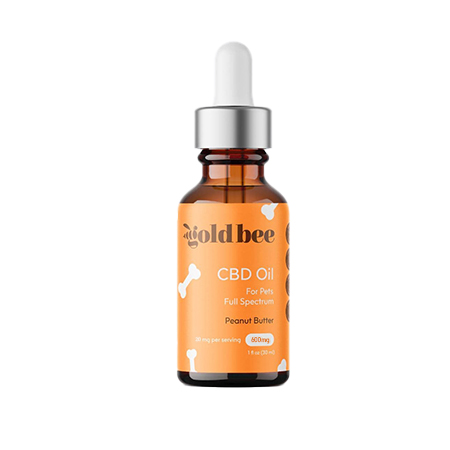What Can I Give My Dog for Pain Relief? (Comparing Medications with Holistic Options)

Most visits to a veterinarian start with the question “What can I give my dog for pain relief?”
Today, it’s easy to open a browser and Google your answers. A quick search will probably lead you to many websites with all sorts of painkillers claiming to offer your bud immediate relief.
However, it’s important to remember that not every potential remedy will work for your dog. Every dog is different, and what works for one pet may yield no results for another.
As a matter of fact, some of these “cures” advertised online can be downright dangerous.
So before you decide to empty your medicine cabinet in search of anti-inflammatory drugs and other commonly used painkillers, let’s take a closer look at what kind of medication is safe, what drugs to avoid, and what the best holistic remedies are when it comes to bringing your canine friend back to shape.
How to Tell If Your Dog Is In Pain
Seeing your best bud in pain can be heartbreaking. Any kind of distress in the pet is also huge stress for the parent. Worse yet, dogs have a high pain threshold, so it may be difficult to tell right away if they are in physical discomfort.
They inherited this trait from wolves. In the wild, it’s risky for an animal to display signs of weakness, as it signals the enemy they’re vulnerable to attack. For example, wolves will often hide the pain in order to protect their social rank within the pack.
Despite being domesticated, dogs still maintain this instinct from their wolf ancestors. As a result, they will hide the pain from their pet parents for as long as they can withstand it.
Whatever condition your canine friend has, it may be relatively progressed by the time noticeable signs of pain appear such as an upset stomach in your dogs.
A visit to a veterinarian may prevent, or at least help diagnose animal diseases, but can you recognize when your dog is in pain by yourself?
Yes, it’s actually pretty straightforward.
Here’s how to tell that your dog is in pain:
- Low energy
- Poor appetite
- Tired look
- A sagging tail
- Vocalizations (groaning, grunting, howling, whimpering, whining, yelping)
- Aggression (self-aggression or towards others who try to touch them)
Before we elaborate on the best methods to ease pain in dogs, let’s focus on the absolute no-no for our four-legged friends.
Pain Relief for Dogs (High Risk)

The following over-the-counter (OTC) and prescription medications for humans shouldn’t be used in dogs.
These medications include anti-inflammatory drugs, steroids, opioids, and more. They were developed to fight human pain specifically and thus are unsafe for dogs. The doses applied in these medications might also be dangerous for their health.
NEVER give your dog:
- Acetaminophen
- Ibuprofen
- Naproxen
They are commonly recommended as OTC painkillers for people, but they should never be administered to a dog under any circumstances.
Aleve for Dogs
Aleve should be avoided when treating pain in dogs because it contains Naproxen.
Naproxen is a compound from the group of Non-Steroidal Anti-Inflammatories (NSAIDs) that can cause unwanted side effects in your dog.
As mentioned earlier, NSAIDs such as Aleve were developed specifically with the human body in mind, including the formulations and dosages. Though relatively safe for people, they aren’t compatible with a dog’s physiology and thus may lead to severe health problems.
The Side Effects of Aleve
If your dog accidentally eats Aleve, the side effects can wreak havoc on its health.
Some potential adverse reactions to NSAIDs include (1):
- Diarrhea
- Depression
- Fatigue
- Kidney failure
- Liver failure
- Painful intestinal problems
- Gastrointestinal bleeding
- Weakness
- Death
The above side-effects are good indicators that you should never give human NSAIDs to dogs for the purpose of pain relief.
Aspirin for Dogs
As we said, a quick Google search will pop up dozens of articles recommending various solutions for pain management. One of the most popular results when you type “what can I give my dog for pain?” is aspirin.
It’s possible that your vet will prescribe aspirin or baby aspirin for short-term pain management from minor benign injuries or conditions.
However, when your veterinarian recommends aspirin, the dog should only receive coated aspirin, as it’s much more tolerable for its stomach. Dog owners should also keep in mind that the human dosage won’t apply when it comes to giving aspirin to dogs for pain.
Moreover, aspirin and baby aspirin should always be consumed with food.
The Side Effects of Aspirin
Aspirin, even baby aspirin should never be given long-term for any health condition that your dog is suffering from, including chronic pain.
Long-term use of aspirin may cause (2):
- Allergy
- Bleeding stomach ulcers
- Clotting disorder
- Liver disease
- Kidney disease
- Uncontrolled high blood pressure
Ibuprofen for Dogs
Ibuprofen is another NSAID commonly available for humans. When people take it, it’s typically harmless unless overdosed, but it’s unsafe to use for pain relief in dogs.
Doctors usually recommend ibuprofen for a wide range of conditions, including fever, inflammation, and arthritis pain.
However, pet owners should steer clear of this NSAID when it comes to treating pain in dogs.
The Side Effects of Ibuprofen
Ibuprofen is highly dangerous for dogs, causing severe health problems such as:
- Stomach ulcers
- Gastrointestinal rupture
- Seizures
- Kidney failure
- Coma
- Death
Being a health-conscious pet owner is critical for the safety of our four-legged buddies. What is safe for humans can still have a devastating effect on dogs.
Opioids for Dogs
Opioids are given to dogs to manage severe surgical pain or help them cope with advanced stages of cancer or to control arthritis pain. In select cases, they can provide short-term pain relief to our canine friends.
However, dogs experiencing chronic pain should never be treated with opioids, as the risks and side effects outweigh the potential benefits.
The Side Effects of Opioids
Opioids come with a long list of adverse effects in long-term use.
Not only are they highly addictive, but they can literally devastate your dog’s health over time, including (3):
- Defecation
- Panting
- Sedation
- Vomiting
- Coma
- Cardiac depression
Best Natural Remedies & Holistic Options for Dogs with Pain
 Limited conventional options for pain relief in dogs have made many pet owners turn to holistic remedies.
Limited conventional options for pain relief in dogs have made many pet owners turn to holistic remedies.
A holistic approach can help alleviate your dog’s discomfort but are much safer than man-made over-the-counter drugs.
There are plenty of natural options to choose from. Some of the most popular products include feverfew and turmeric.
Supplements containing these two ingredients are easier than ever to purchase today. Turmeric is available in a number of forms appropriate for pets, which is a good thing for pet parents, considering the increasing evidence suggesting the powerful anti-inflammatory effects — similar to those of cortisone but without the potential adverse reactions.
In addition, you may want to explore the following herbal supplements:
- Arnica Montana
- Boswellia
- Devil’s Claw
- Ginger
- Green Lipped Mussels
- St. John’s Wort
- Yucca
All of the above have natural anti-inflammatory and pain-mitigating properties.
In addition to herbal supplements, you may also consider treatments like physical therapy, massage, acupuncture, hydrotherapy, and aromatherapy to further ease pain in your dog.
There’s also one particularly interesting approach to pain relief, both for humans and dogs — it’s CBD oil.
CBD Oil for Pain Relief in Dogs
CBD oil is one of the most talked-about supplements in the wellness space. Its versatility and high safety profile have made it an appealing option for those seeking alternative remedies for pain relief.
The best thing about CBD oil is that both humans and dogs tolerate it even in very high doses. There have been no reports about fatal CBD overdoses, but there’s a plethora of studies and reports from pet owners suggesting that CBD oils can be an effective way to manage pain in their canine friends.
CBD oil is available in many forms, including tinctures, capsules, pet treats, and topical creams.
Here we explain everything you need to know about this herbal supplement — and how it can help relieve pain in dogs.
What Is CBD And How Does It Work?
 CBD stands for cannabidiol. It is one of the two major active ingredients produced by cannabis plants (besides THC).
CBD stands for cannabidiol. It is one of the two major active ingredients produced by cannabis plants (besides THC).
Unlike THC, CBD doesn’t have intoxicating properties, so it won’t get you or your dog high.
This makes CBD safe for both humans and pets.
CBD interacts with the endocannabinoid system (ECS), which is the major regulatory network in all mammals. The ECS helps the body maintain homeostasis by regulating several important biological functions, such as memory, mood, immune function, body temperature, appetite, reproduction, neuroprotection, and pain perception (4).
Similar to humans, dogs have endocannabinoid systems that interact with cannabis compounds.
That’s because the ECS produces its own cannabis-like molecules called endocannabinoids.
Whenever homeostasis gets compromised, the ECS releases more endocannabinoids to help the body return to its normal state.
However, endocannabinoids have a relatively short duration in the bloodstream. Insufficient cannabinoid concentrations may compromise the functioning of other systems and organs throughout the body.
Researchers have linked different types of chronic pain, such as arthritis, nerve pain, and fibromyalgia, to endocannabinoid deficiencies.
It turns out that CBD can level these deficiencies by signaling the ECS to produce more of its endocannabinoids. Moreover, it can extend their duration by inhibiting the enzyme that breaks them down. More endocannabinoids in the circulatory system translate into better ECS performance — allowing the body to return to homeostasis.
CBD has a multifaceted mechanism of action when it comes to pain relief. For one, it blocks the release of pro-inflammatory compounds called cytokines. Inflammation is the root cause of pain, so by reducing it, cannabidiol can ease the discomfort in your dog (5).
CBD also acts on the TRPV1 vanilloid receptors, which are responsible for pain transmission — the reason why essential oils from vanilla have been used to treat pain in folk medicine (6).
Last but not least, CBD increases the concentrations of anandamide — one of the two endocannabinoids. Higher levels of anandamide are associated with lower pain levels and greater mood stability (7).
Let’s take a look at the best types of CBD oil and how to use them to relieve pain in dogs.
How to Use CBD Oil for Pain Relief in Dogs
 You can give CBD oil to your pet, but you can also use a topical cream to address pain from a different angle.
You can give CBD oil to your pet, but you can also use a topical cream to address pain from a different angle.
Here’s how both products work.
CBD oil is made of a hemp extract that has been suspended in a food-grade carrier oil. It comes in dark bottles, with a dropper attached for accurate dosing. If you want to give CBD oil to your dog for pain, you need to measure out the desired amount using the dropper and place it under your dog’s tongue. The effects should be noticeable within 15–30 minutes because the oil absorbs directly into the bloodstream.
If your dog fusses over the taste of CBD oil, you can try giving them some CBD-infused pet treats. These products contain a premeasured amount of CBD per treat and are made in appealing flavors such as bacon, peanut butter, or cheese. When consumed this way, the CBD needs to pass through the digestive system before entering the bloodstream — causing a delay in their onset. It usually takes 40 minutes for CBD edibles to start working.
Topical CBD products were developed to address pain and other types of discomfort in dogs locally. The bioavailability of CBD topicals is ZERO, meaning that none of the CBD enters the circulatory system. Instead, CBD interacts with the CB2 receptors in the skin’s epidermis layer, reducing inflammation and making pain more manageable. You can choose from a wide range of topicals, from creams to gels to shampoos and dermatological ointments.
The best approach to using CBD for pain in dogs is to combine a sublingual product with a topical formulation.
Best CBD Oils for Dogs with Pain
1. Royal CBD (Best CBD Oil Overall)
Get 15% off all Royal CBD products. Use code “CFAH” at checkout.
Pros:
- Organic hemp from Colorado
- Full-spectrum CBD
- Up to 500 mg of CBD per bottle
- Bacon flavor
- Suitable for dogs of different breeds and sizes
- Third-party tested for potency and purity
Cons:
- Only one flavored option
- Not available in local stores
If you’re looking for safe CBD products to ease your dog’s pain, Royal CBD ticks off every quality mark on the list. From locally-grown hemp to CO2 extraction to meticulous third-party testing, this company is the synonym of high-quality.
The Royal Gold Bee CBD pet oil is available in three concentrations:
- 125 mg (small dogs)
- 250 mg (medium-sized dogs)
- 500 mg (large dogs)
These are full-spectrum extracts, meaning your dog receives all beneficial compounds from hemp, including adjunctive cannabinoids, terpenes, flavonoids, and traces of THC. These compounds work together to improve the efficacy of CBD oil — for this reason, full-spectrum CBD is believed to be superior to isolate-based oils.
If your dog doesn’t like the hempy aftertaste of natural CBD, this oil is likely to change the game with its delicious bacon flavor.
Royal CBD also offers three formulas of CBD dog treats that are suited to different health needs — anxiety, mobility (joint pain and arthritis), and immune support.
2. Gold Bee (Runner Up)
Pros:
- Organic hemp from California
- Full-spectrum CBD
- 600 mg of CBD per bottle
- Peanut butter flavor
- Third-party tested for potency and purity
Cons:
- No low-potency options for smaller dogs
- Only one flavored version
Gold Bee has been making superfoods for several years, including organic raw honey and coconut oil, before launching its line of CBD products.
Today, Gold Bee is one of the most recognizable brands on the market; its line of CBD extracts for humans and dogs is making big headlines in the industry’s press as well as on experts’ blogs and among regular consumers.
The Gold Bee CBD oil for dogs comes in one potency variant, offering 600 mg of CBD per bottle. This translates into 20 mg of CBD in every milliliter – a dose appropriate for large dogs and enough for smaller pups to make their supplementation last for a few months. This product is one of the highly recommended CBD pet oil to treat dog allergies, diarrhea, and even upset stomach.
All of Gold Bee’s products come from organic farms in California and are double-tested for quality and safety in a certified laboratory. The only reason the company scores lower than Royal CBD is the lack of lower potencies for extra small dogs.
CBD Dosage for Dogs with Pain
So, you’ve just decided to give CBD oil to your dog for pain, but are you sure you know how to dose it properly?
CBD oil is a plant-based extract, meaning it contains over 400 phytochemicals aside from CBD.
Everybody is different and there’s no universal CBD dosage that would work for a particular condition.
The amount of CBD that will work for your dog depends on factors like age, size, metabolism, and severity of pain.
For general supplementation, a good rule of thumb is to start with 1–2 mg of CBD for every 10 pounds of weight. You can keep a dosage journal and write down the effects and how your dog feels after each dose. Sometimes, CBD may need more time to level the cannabinoid deficiencies; test each dose for about one week and observe the progress.
If you want to address a specific condition with CBD, we recommend checking with the studies conducted in this area. You can look at the canine dosages applied in each study and give CBD to your dog for pain accordingly.
Is CBD Safe for Dogs?
CBD has been acknowledged as a safe compound with an abuse potential similar to placebo. Studies examining the efficacy and safety of CBD products concluded that even high doses of CBD oil administered daily don’t have life-threatening side-effects.
That being said, CBD oil may cause a few mild reactions, such as:
- Dry mouth
- Dizziness
- Change in appetite
- Lowered blood pressure
- Diarrhea
- Problems with coordination
CBD can also interact with certain medications. If your dog’s medication has a grapefruit warning on it, you shouldn’t take it with CBD. Cannabidiol interacts with the enzymes in the liver that metabolize drugs, affecting their concentration in their bloodstream. Sometimes, the interaction may lead to toxic concentrations of the drug in your dog’s system, posing a threat to its life.
Consult a holistic veterinarian to establish the right CBD routine for your dog and avoid negative interactions.
Why Opioids Are a Big ‘No!’ for Dogs
 Opioids are one of the strongest painkillers known to humans. They are usually used as a means of intervention to manage post-surgical pain or help terminally-ill patients reduce their suffering at the end.
Opioids are one of the strongest painkillers known to humans. They are usually used as a means of intervention to manage post-surgical pain or help terminally-ill patients reduce their suffering at the end.
The use of opioids for pain in dogs follows the same pattern.
However, dogs should never be given opioids in the long term due to their severe side effects.
As we mentioned earlier in the article, opioids are highly addictive. Their misuse may lead to crippling withdrawal symptoms such as muscle pain, tremors, nausea, vomiting, mood swings, and body temperature fluctuation.
But most importantly, opioids can easily overdose. And since they affect the brain stem receptors responsible for respiratory function, there’s a high risk of a fatal overdose.
Opioids should only be used as recommended by a veterinarian and under strictly controlled dosages.
The Risks & Side Effects of Traditional Pain Meds for Dogs
If your dog is in severe pain, your veterinarian may prescribe certain pain medications that are suitable for animals.
There are three types of conventional painkillers that you can give to your dog:
- Novox (typically prescribed to reduce inflammation, post-surgical pain, and arthritis pain)
- Tramadol
- Gabapentin (usually prescribed to older dogs for chronic pain, nerve pain, and seizures)
While these medications may temporarily help with pain, pet parents should be mindful of their potential side effects.
Some reported adverse reactions to conventional pain medications for dogs include:
- Anxiety
- Convulsions
- Depression
- Diarrhea
- Lethargy
- Loss of Appetite
- Loss of Coordination
- Nausea
- Sedation
- Vomiting
Wrapping It Up: Best Ways to Relieve Pain in Dogs
Seeing your dog in pain is one of the worst feelings you may experience as a pet parent.
Many dog owners feel tempted to go through their medicine cabinet for a quick remedy, choosing traditional over-the-counter painkillers for humans.
However, doing so isn’t appropriate for pain management in dogs, as the potential side effects outweigh the short-term benefits. The same applies to many of the stronger pain medications prescribed by veterinarians and animal clinics.
Fortunately, you can also choose from many holistic options available on the market today. Herbal supplements like CBD oil, turmeric, and feverfew may ease your dog’s discomfort in a similar fashion to the above painkillers, but without the litany of dangerous adverse reactions.
Integrating natural pain remedies along with a strengthening diet, mechanical therapies, and proper stress management under the supervision of a holistic veterinarian and pet behaviorist is a sure way to improve your dog’s well-being and promote healthy recovery.
Reference links:
- Monteiro-Steagall, BP et al. “Systematic review of nonsteroidal anti-inflammatory drug-induced adverse effects in dogs.” Journal of veterinary internal medicine vol. 27,5 (2013): 1011-9. doi:10.1111/jvim.12127
- Nap, R C et al. “Pijnstillers; het gebruik van aspirine bij de hond; invloeden van tablettype en voeropname op de plasma-salicylaatconcentratie” [Analgesics; the use of aspirin in dogs; effects of tablet type and food intake on plasma salicylate level]. Tijdschrift voor diergeneeskunde vol. 118,13 (1993): 439-42.
- Benyamin, Ramsin et al. “Opioid complications and side effects.” Pain physician vol. 11,2 Suppl (2008): S105-20.
- Corroon, Jamie, and Jake F Felice. “The Endocannabinoid System and its Modulation by Cannabidiol (CBD).” Alternative therapies in health and medicine vol. 25,S2 (2019): 6-14.
- Nagarkatti, Prakash et al. “Cannabinoids as novel anti-inflammatory drugs.” Future medicinal chemistry vol. 1,7 (2009): 1333-49. doi:10.4155/fmc.09.93
- Costa, Barbara et al. “Vanilloid TRPV1 receptor mediates the antihyperalgesic effect of the nonpsychoactive cannabinoid, cannabidiol, in a rat model of acute inflammation.” British journal of pharmacology vol. 143,2 (2004): 247-50. doi:10.1038/sj.bjp.0705920
- Leweke, F M et al. “Cannabidiol enhances anandamide signaling and alleviates psychotic symptoms of schizophrenia.” Translational psychiatry vol. 2,3 e94. 20 Mar. 2012, doi:10.1038/tp.2012.15

